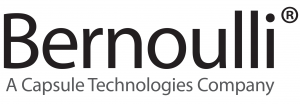
With alarms, sometimes less is more
by Jessica Lake, BSN, BS, RN
I was recently watching a new show on TV featuring Marie Kondo, who is best known for her methods of organization and decluttering of living spaces. She believes that sometimes having less is more, because it gives value to what you do have. This got me to thinking about technology and alarms in the hospital.
Almost every medical device that can produce an alarm does. Let’s break down what that means in practice.
The average hospital room contains between 15 and 20 medical devices. Each patient will generate about 135 alarms each day—or about 11 alarms per hour for a 12-hour nursing shift. If a general care floor nurse is responsible for seven patients over the course of a shift, that translates to 945 alarms, or 79 alarms per hour for a 12-hour a shift! And of those 945 alarms, 90 percent—851 alarms—require no clinical intervention.
This is because medical devices’ alarms only indicate that a predetermined parameter has been crossed. They are not always reflective of a dangerous turn in a patient’s health. They are, on the other hands, stressful for patients and family members, and make it easy for staff to “tune out” alarms as a means of self-preservation.
As hospitals became more attuned to the dangers of alarm fatigue, they began implementing comprehensive management programs to reduce spurious alerts. The results of those efforts have been mixed, but alarm management programs that focus exclusively on reducing the quantity of alarms are only fighting half the battle.
Alarm management, properly understood, is about surfacing information that is actionable and clinically relevant. Alarms often don’t show the whole picture of what is occurring with the patient.
A violation of one parameter may not indicate much, but when combined with other real-time data can prove to be clinically relevant. If we are able to correlate other information about the patient in real time, we can begin to make more informed and better decisions, improving patient outcomes. This approach can be achieved with the Bernoulli One platform.
Bernoulli monitors patients by receiving live data directly from bedside biomedical devices. Those include capnography monitors, pulse oximetry sensors, blood pressure monitors, cardiac monitors, and other clinical monitoring systems. In real-time the system evaluates the input, analyzes the data that comes from the EHR system, applies multi-variate rules (pre-defined by hospital protocols) to determine whether events are actionable, and if so, sends information to the right people.
Not to be confused with traditional alarm management software, Bernoulli has the unique ability to create new alarms from the raw data (i.e., Bernoulli smart alarms) versus simply passing along alarm information. We call this alarm surveillance, and it is a significant advancement over traditional alarm management. Typically, an alarm management solution sends alarm notifications when a patient’s vitals go above or below the normal limits set on the device. In contrast, Bernoulli alerts caregivers on trends—either based on a single patient vital or multiple patient vitals.
Using this level of advanced alarm surveillance, in combination with caregivers’ reevaluating the device settings, hospitals are better equipped to reduce nuisance alarms and quiet their surroundings while maintaining or even improving patient safety.
About the Author:
 Jessica Lake, BSN, BS, RN is a Sr. Clinical Solutions Manager at Bernoulli, where she focuses on customer acquisition, implementation design and clinical process consultation, as well as assisting with defining requirements for services proposals, customer testing, training and go-live support.
Jessica Lake, BSN, BS, RN is a Sr. Clinical Solutions Manager at Bernoulli, where she focuses on customer acquisition, implementation design and clinical process consultation, as well as assisting with defining requirements for services proposals, customer testing, training and go-live support.
Jessica has 10-plus years of clinical experience as a Registered Nurse at several acute care hospitals in the Delaware Valley area including Kennedy Healthcare, Cooper University Hospital and Lourdes Medical Center.
In addition to a strong clinical background, Jessica has worked for a variety of healthcare vendors focused on communication and workflow improvement for more than 13 years. Prior to joining Bernoulli her roles included Clinical Solutions Consultant, Clinical Applications Specialist, and Clinical Applications Specialist Manager at Vocera Communications and Clinical Product Marketing Manager at PerfectServe.
Jessica is currently a member of AONE and ANIA. View Jessica’s profile on Linkedin.

